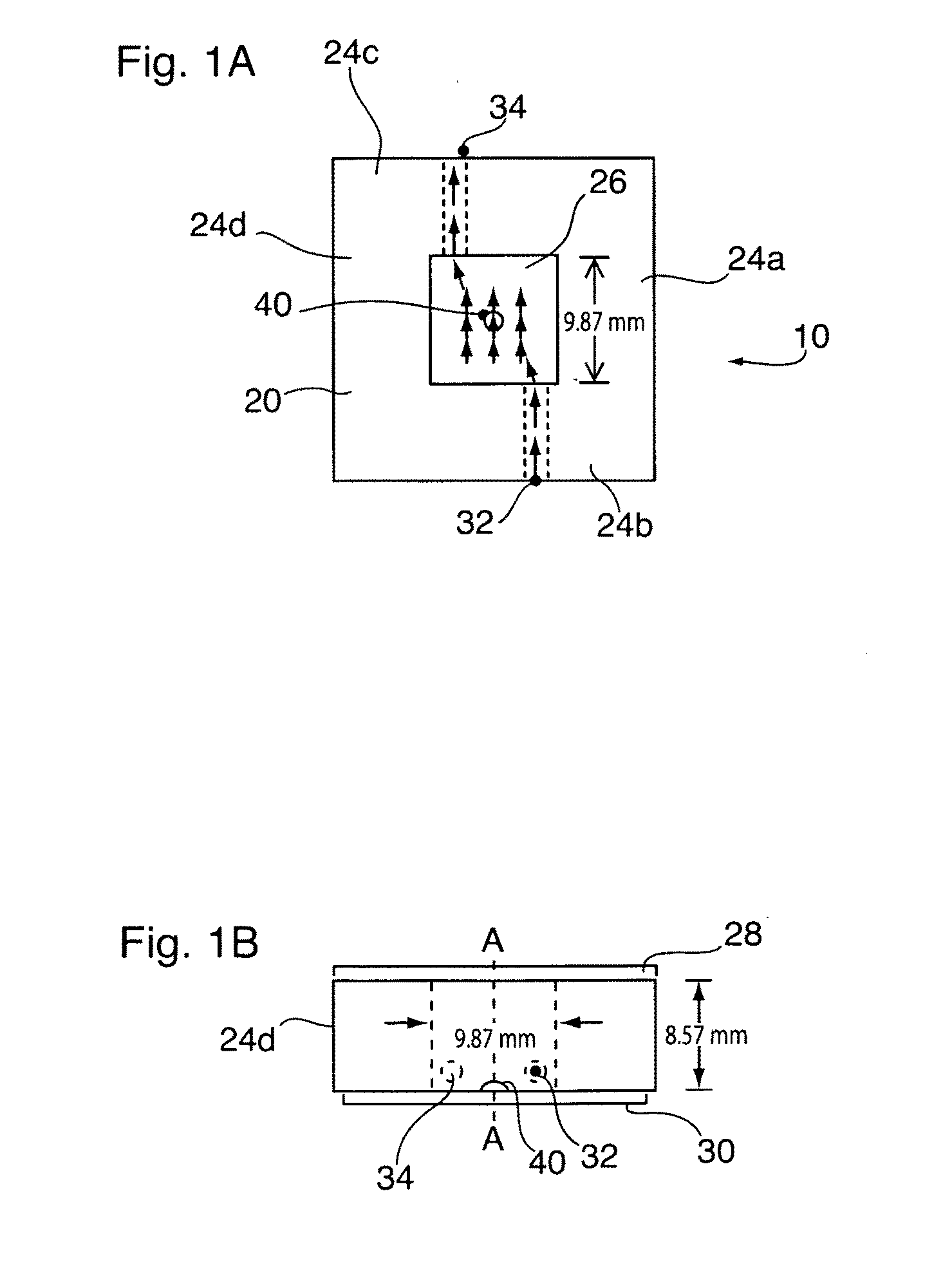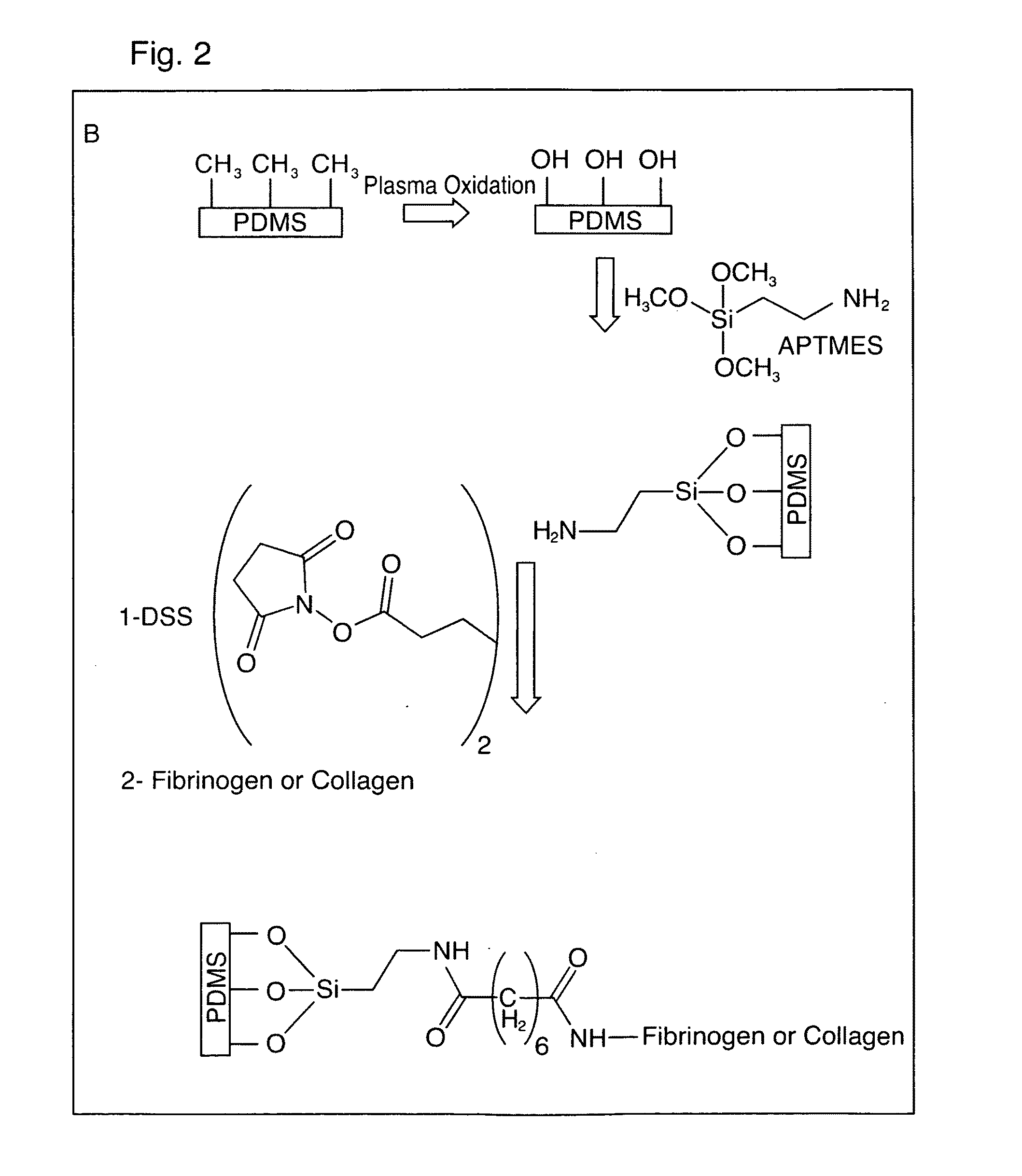Method and apparatus to conduct kinetic analysis of platelet function in whole blood samples
a technology of kinetic analysis and platelet function, which is applied in the direction of biochemistry apparatus, biochemistry apparatus and processes, packaged goods, etc., can solve the problems of little to no availability of simple, reliable, robust and inexpensive flow chambers, and achieves simple optical monitoring and high reliability.
- Summary
- Abstract
- Description
- Claims
- Application Information
AI Technical Summary
Benefits of technology
Problems solved by technology
Method used
Image
Examples
Embodiment Construction
Parallel Plate Flow Chamber 20
[0027]Reference is made to FIGS. 1A and 1B which illustrates a flow cell 10 having parallel plate flow chamber 20 in accordance with a preferred embodiment. The flow chamber 20 is defined radially by a number peripherally extending polytetrafluoroethylene sidewall 24, and is sealed at each of its ends by optically transparent glass cover plates 28, 30. As shown best in FIG. 1A, a blood flow inlet 32 and fluid flow outlet 34 extend through opposing sidewalls 24b, 24c. A chemically immobilized collagen or fibrinogen bed 40 is adhered to the glass cover plate 30 along an axial central (A1-A1) portion of the flow chamber 20. As will be described, the parallel plate flow chamber 20 is used for analysis of platelet binding and aggregation to the deposited collagen or fibrinogen bed 40 to assist in the monitoring, diagnosis or treatment of blood or circulatory disorders. In a most preferred use, the flow chamber is used to monitor treatment and / or provide more...
PUM
 Login to View More
Login to View More Abstract
Description
Claims
Application Information
 Login to View More
Login to View More - R&D
- Intellectual Property
- Life Sciences
- Materials
- Tech Scout
- Unparalleled Data Quality
- Higher Quality Content
- 60% Fewer Hallucinations
Browse by: Latest US Patents, China's latest patents, Technical Efficacy Thesaurus, Application Domain, Technology Topic, Popular Technical Reports.
© 2025 PatSnap. All rights reserved.Legal|Privacy policy|Modern Slavery Act Transparency Statement|Sitemap|About US| Contact US: help@patsnap.com



